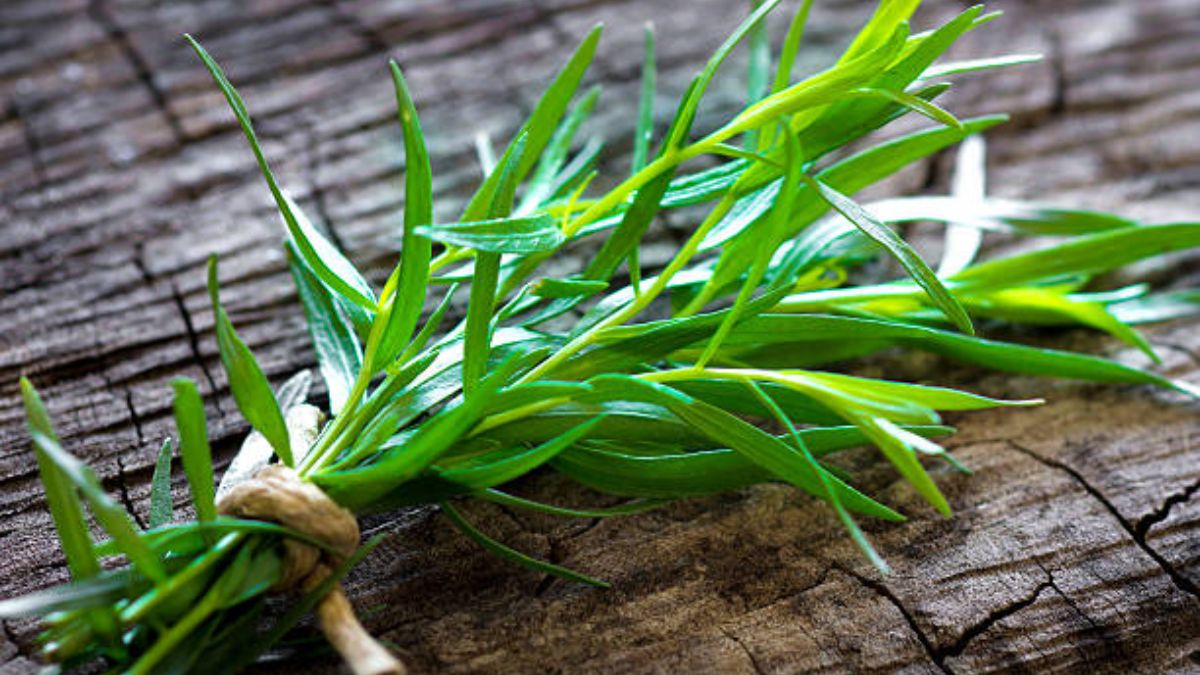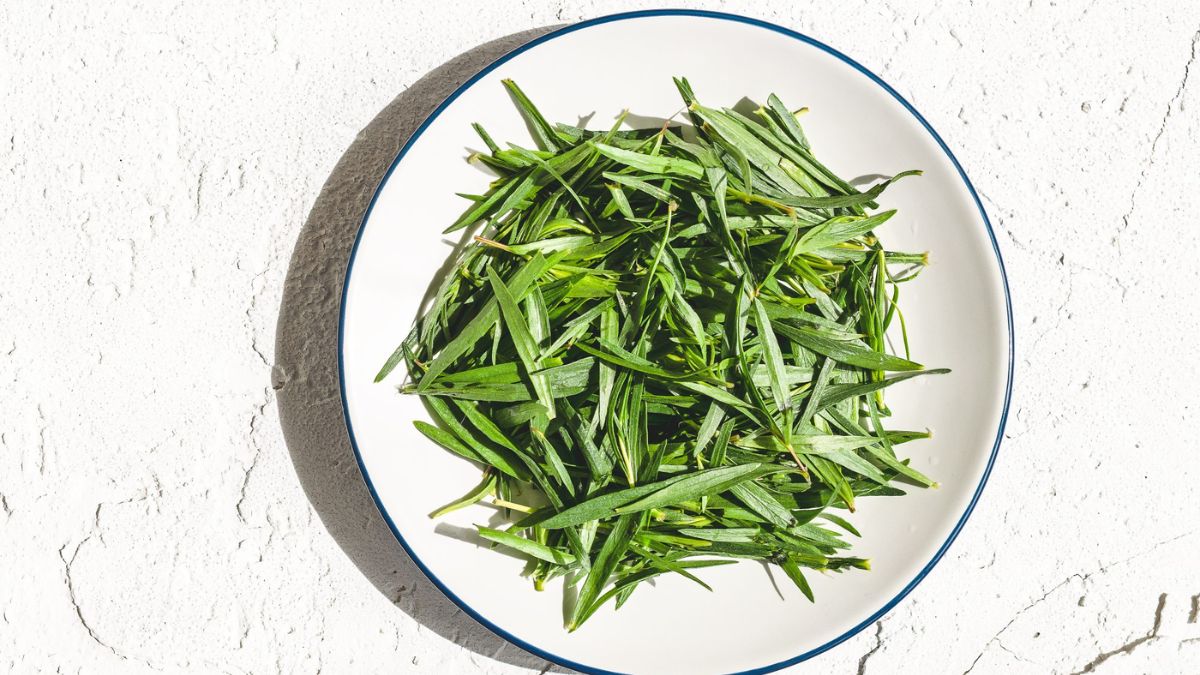If you want to know about tarragon, In this article, you will get all the crucial information about tarragon nutrition facts. Tarragon is a leafy green herb that smells very strong and tastes like licorice. It gives salad dressings, sauces, and fish and chicken dishes a fresh spring taste and a touch of elegance. It is often used in French cooking. Tarragon can be bought both fresh and dried all year long.
Tarragon Nutrition Facts
What is Tarragon?
Tarragon is a cooking herb known for its shiny, thin leaves and strong smell. The French type is the one most often used in cooking. Tarragon is used in a lot of French dishes, like Béarnaise sauce. Its mild flavor goes well with fish, chicken, and eggs. It is called “the king of herbs” in France because it can make a dish taste better. It is one of the four herbs in the French blend fines herbes, including parsley, Tarragon, chervil, and chives.
Tarragon is a perennial plant, meaning it will come back every year if you plant it. The stems are tough and woody, and the long, thin leaves have points at the ends. It is in the Artemesia genus with other greens that taste like licorice, like the one used to make the French aperitif absinthe.
Tarragon is a herb that is often used in food. It has long, green, papery leaves that smell nice and rough. Tarragon can be used fresh or dried in a lot of different ways. The strong taste of Tarragon comes from a chemical called estragole. It is a chemical that makes herbs like fennel and anise taste floral. Estragole comes from estragon, which is the French name for Tarragon.
Benefits of Tarragon
Here are eight surprising benefits and uses of Tarragon
-
May Help Decrease Blood Sugar by Improving Insulin Sensitivity
Insulin is a hormone that helps glucose get into your cells to be used as fuel. Insulin resistance can be caused by diet and inflammation, leading to high glucose levels. Researchers have found that Tarragon can help your body use glucose and improve insulin. In a seven-day study on diabetic animals, tarragon extract was found to lower blood sugar by 20% compared to a placebo.
Also, 24 people with impaired glucose tolerance took part in a 90-day, randomized, double-blind study of the effects of Tarragon on insulin sensitivity, insulin, and glycemic control. People who took 1,000 mg of Tarragon before breakfast and dinner had a big drop in the amount of insulin they made, which can help keep their blood sugar levels even all day.
-
May Improve Sleep and Regulate Sleep Patterns
Lack of sleep has been linked to bad health outcomes and can make you more likely to get heart disease and type 2 diabetes. Changes in work schedules, high-stress levels, or busy lives may cause poor sleep quality. People often use sleeping pills or hypnotics to help them sleep, but they can cause problems like depression or drug abuse.
The Artemisia plant family, which includes Tarragon, has been used to treat several health problems, such as trouble sleeping. In a study with mice, Artemisia plants seemed to have a calming effect and help control how often mice slept. Due to the small size of this study, however, more research is needed before Tarragon can be used to help humans sleep.
-
May Increase Appetite by Reducing Leptin Levels
Loss of appetite can happen for many reasons, such as getting older, sad, or cancer treatment. If you don’t treat it, it can lead to not getting enough food and a lower quality of life.
An imbalance in the hormones ghrelin and leptin could also cause a lack of hunger. The balance of energy depends on these hormones. Ghrelin is a hormone that makes you feel hungry, and leptin is a hormone that makes you feel full. When ghrelin levels go up, it makes people feel hungry. On the other hand, when leptin levels go up, you feel full.
In one study, mice were used to look at how tarragon extract affects hunger. The results showed that insulin and leptin were released less and that body weight increased. Based on these results, tarragon extract may help make people feel more hungry. But results were only seen when a high-fat diet was also used. To confirm these effects, more research needs to be done on people.
-
It may Help Relieve Pain Associated with Conditions Like Osteoarthritis.
Tarragon has been used to treat pain for a long time in traditional folk medicine. In a 12-week study, 42 people with osteoarthritis took a supplement called Arthrem, which contains an extract of Tarragon. The researchers looked at how well it helped with pain and stiffness. People whose symptoms improved when they took 150 mg of Arthrem twice a day compared to those who took 300 mg twice a day or a placebo.
Researchers thought the lower dose might have worked better than the higher dose because it was better tolerated. Other studies on mice also found that Artemisia plants were good at treating pain, and it was suggested that they could be used instead of traditional painkillers.
-
It May have Antibacterial Properties and Prevent Foodborne Illnesses.
More and more people want food companies to use natural additives instead of chemicals made in a lab to help keep food fresh. Additives are put in food to change its texture, keep it from separating, keep it fresh, and stop bacteria like E. coli from making people sick. One popular alternative is oil from plants.
One study examined the effectTarragonragon essential oil on the bacteria Staphylococcus aureus and E. coli. These are two bacteria that can make you sick from eating. For this study, 15 and 1,500 g/mL of Tarragon Tarragonl oil were added to white cheese from Iran.
The results showed that, compared to the placebo, all samples with tarragon essentiTarragondded to them killed the two types of bacteria. Researchers concluded that Tarragon might be Tarragonay to keep foods like cheese fresh.
What does Tarragon Taste Like?
Whether they like the taste of licorice, most people either love or hate Tarragon. But the thTarragontastes like more than just anise because it has a complex flavor. It has hints of vanilla, mint, pepper, and eucalyptus, which makes it different from other foods that taste like licorice, such as fennel.
On the other hand, the French variety is mild and combines these different flavors to make an elegant and delicate herb. Tarragon has a floral smell and a taste that is very sweet and bitter. Tarragon’s strong, bittersweet taste is Tarragonagoned to that of licorice, anise, and fennel.
This is because Tarragon contains tarragon col, a natural compound in many plants and trees that smells and tastes like licorice. It is used a lot in many different cultures. This herb is one reason authentic French cuisine is so renowned.
Where to Buy Tarragon?
Dried Tarragon canTarragonagon is the spice section of most grocery stores, and it’s also sold by many major retailers online. Fresh Tarragon mayTarragonagono find herbs like parsley, chives, dill, and cilantro, which are more common. You will find it in the produce section in bunches or clamshells if it is sold in grocery stores.
In the early spring and summer, you might also see it at your neighborhood farmers’ market. Tarragon plants in pots are also available at gardening supply stores or even online. Place the pot in the sun and give it regular waterings. The growth of tarragon is particularly sensitive to temperature, and cold weather frequently reduces the flavor of the leaves.
Because of this, it has been hard to get products, and now there are so few that they might not be available for two to three weeks.”Based on the game files, you can only find Tarragon by Tarragonagonerbs in Brightwood, Reekwater, and Brimstone Sands in New World. When you harvest any Herbs in those areas, you also have a good chance of getting Tarragon aloTarragontarragon Hyssop.
What is a Substitute for Tarragon?
BaTarragonagonBasil has a finish that tastes a little like licorice like Tarragon, itTarragonagonreen and herbaceous. You can use it the same way you would use Tarragon.
JuTarragongon to Tarragona basil thinly to make it look like thin tarragon leaves. People have suggested using the same amount of thyme, dill, or rosemary instead of Tarragon, buTarragonthink nose herbs would change the dish’s taste, even if they wouldn’t ruin it.
How to Store Tarragon?
You caTarragonresh Tarragon outTarragonagonter or in the fridge. Put tarragon stems in a small glass of water and leave for about a week on the counter. Keep the herb in the fridge if you want it to last longer. Rinse and dry fresh Tarragon, wrTarragongona paper towel, and put it in an airtight container. It will keep in the refrigerator for about two weeks—fresh Tarragon canTarragonagonzen for up to five months.
Dried Tarragon wilTarragonon forTarragonif kept in a cool, dark place with no air. Tarragon should be kept in the refrigerator, either loosely rolled in a damp paper towel and put in a plastic bag or a jar of water with a loose plastic cover. Tarragon doesn’t dry well because it loses a lot of its taste. The best place to store fresh Tarragon is Tarragonridge.
When the herb’s leaves turn brown, it’s time to throw them away. Just rinse the stem and leaves with cold water, wrap them loosely in a damp paper towel, and put them in a plastic bag. This helps the plant keep its moisture—most fresh Tarragon wilTarragonour to five days in the fridge. Dried Tarragon canTarragon to four to six months in a cool, dark place with no air leaks.
Conclusion
In this article, you have learned tarragon nutrition facts. Tarragon has a lot of great health benefits, such as the ability to lower blood sugar, reduce inflammation and pain, and improve sleep, appetite, and heart health. Not only that, but it can be used in many different ways and can be added to both fresh and dried foods. You can easily get all the tarragons Tarragona by adding them to your food.


